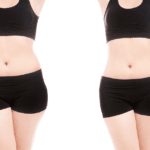Introduction
Non-invasive body contouring treatments have gained significant popularity in recent years as individuals seek effective ways to reduce stubborn fat without undergoing surgery. Among the most popular methods are Laser Lipolysis and CoolSculpting. Both treatments aim to eliminate fat cells but use different technologies and techniques. This article explores the key aspects of Laser Lipolysis and CoolSculpting, including how they work, their effectiveness and results, safety and side effects, and cost and accessibility.
How Laser Lipolysis and Coolsculpting Work
Laser Lipolysis works by using a laser to target and heat fat cells beneath the skin. The laser energy heats the fat cells to a temperature that causes their structural integrity to break down. Over the next few weeks, the body’s lymphatic system naturally processes and eliminates these destroyed fat cells. This non-invasive procedure typically takes about 25 minutes per treatment area and requires no downtime, making it a convenient option for reducing stubborn fat pockets and contouring the body.
CoolSculpting, or cryolipolysis, uses controlled cooling to freeze and destroy fat cells. During the procedure, a CoolSculpting applicator is placed on the targeted area, drawing the fat tissue into the applicator cup. The applicator then cools the fat cells to a temperature that triggers cell death without damaging surrounding tissues. Over the following weeks, the body naturally processes and eliminates the dead fat cells. Each CoolSculpting session lasts about 35 to 60 minutes per area, and multiple areas can be treated in one session.
Effectiveness and Results of Laser Lipolysis and Coolsculpting
Laser Lipolysis is effective for targeted fat reduction and skin tightening. Patients typically see noticeable results after one session, with optimal results appearing within a few weeks to a few months as the body continues to eliminate the liquefied fat. The procedure is particularly effective for areas with loose skin, such as the abdomen, thighs, and arms, due to the added benefit of collagen stimulation.
CoolSculpting is also highly effective for reducing fat in specific areas. Patients usually start to see results within a few weeks, with full results becoming apparent after two to three months. CoolSculpting is ideal for areas with pinchable fat, such as the abdomen, flanks, thighs, and double chin. Multiple sessions may be required to achieve the desired results, especially for larger or multiple treatment areas.
Safety and Side Effects
Laser Lipolysis is generally safe and well-tolerated, with minimal side effects. Common side effects include mild tenderness, redness, swelling, and bruising at the treatment site, which typically subside within a few days. Some patients may experience a slight tingling or warming sensation during the procedure. Rarely, there may be temporary numbness or firmness in the treated area. Since Laser Lipolysis is a non-invasive procedure, it requires no downtime, allowing patients to resume their normal activities immediately after treatment.
CoolSculpting is a non-invasive procedure with a low risk of complications. Common side effects include temporary redness, swelling, bruising, and numbness at the treatment site. These side effects usually resolve within a few days to a few weeks. There is a rare risk of paradoxical adipose hyperplasia, where the treated fat cells enlarge rather than shrink. Most patients can return to their daily activities immediately after the procedure.
Cost and Accessibility
The cost of Laser Lipolysis varies depending on the size of the treatment area and the geographic location of the clinic. On average, the cost ranges from $2,500 to $7,000 per session. While more expensive than CoolSculpting, Laser Lipolysis often requires fewer sessions for noticeable results. The procedure is widely available in cosmetic surgery clinics and medical spas.
CoolSculpting is generally more affordable, with costs ranging from $600 to $1,500 per session per area. The total cost depends on the number of areas treated and the number of sessions required. CoolSculpting is widely accessible, offered in many dermatology clinics, medical spas, and even some primary care offices.
In conclusion, both Laser Lipolysis and CoolSculpting offer effective non-invasive options for fat reduction. The choice between the two depends on individual preferences, specific treatment areas, and budget considerations. Consulting with a qualified provider can help determine the most suitable option based on personal goals and medical history.








